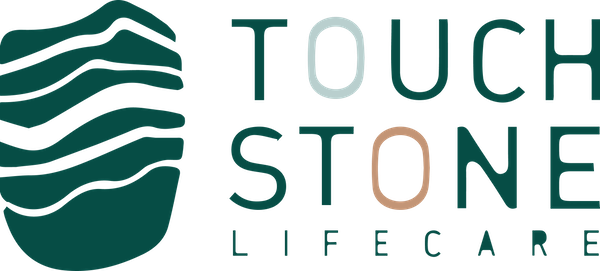On April 1, 2023, six new quality indicators (QIs) will need to be reported on by residential aged care providers through The National Aged Care Mandatory Quality Indicator Program. In this article, Dr Merran Cooper, CEO of Touchstone Life Care, explains what’s changing and why.
What is the National Aged Care Mandatory Quality Indicator Program (QI Program)?
The National Aged Care Quality Indicators Program (QI Program) is designed to provide transparency on the quality of aged care services in Australia. Residential aged care services must collect data on certain Quality Indicators, which are updated every two years. This allows for informed decisions about aged care options by consumers and greater accountability for providers who deliver high-quality aged care.
When did the National Aged Care Mandatory Quality Indicator Program (QI Program) begin?
It is a mandatory program for Commonwealth-subsidised residential aged care services, that began in July 2019. (More Choices for a Longer Life – Mandatory National Quality Indicators and Standards for Residential Aged Care Services in Australia).
The first set of quality indicators were released in July 2019 and covered a range of topics such as safety, health and wellbeing, meals, environment and culture.
In July 1 2021, the Quality Indicators were updated to require services to collect data and report on the following five areas:
- pressure injuries
- physical restraint
- unplanned weight loss
- falls and major injury
- medication management including polypharmacy and anti-psychotics.
What are the Quality Indicators and why are they changing?
From 1 April 2023, the program is being expanded further to require services to also collect data and report on:
- Activities of daily living – The percentage of care recipients who experienced a decline in activities of daily living
- Incontinence care – The percentage of care recipients who experienced incontinence associated dermatitis
- Hospitalisation – The percentage of care recipients who had one or more emergency department presentations
- Workforce – The percentage of staff turnover
- Consumer experience – The percentage of care recipients who report ‘good’ or ‘excellent’ experience of the service
- Quality of life – The percentage of care recipients who report ‘good’ or ‘excellent’ quality of life.
Who selects the Quality Indicators and how are they selected?
The process of designing the new Quality Indicators for residential aged care was undertaken by the Aged Care Quality and Safety Commission (the Commission) and included:
Systematic review of existing literature on Quality Indicators (QIs) for residential aged care.
- Analysis of relevant national and international documents related to QIs.
- Qualitative interviews with key stakeholders including providers, consumers, and policy makers.
- Descriptive analysis of existing QI data from the Australian Aged Care Quality Agency.
- Statistical modelling to develop a set of consensus-based QIs.
- Evaluation of the 6 week pilot program’s effectiveness and usability in a residential aged care setting (136 residential aged care services).
- Development of an online tool to facilitate data collection, analysis and reporting on the agreed indicators.
When does collection of the new Quality Indicators begin?
Introducing these new Quality Indicators by July 2023 aligns with recommendations of the Royal Commission into Aged Care Quality and Safety.
Approved residential aged care providers must:
- start collecting new quality indicators in the April – July quarter , 2023
- submit quality indicator data in the 1 – 21 July 2023 reporting period.
How do the new Quality Indicators affect me as a resident or as a family member of a resident in aged residential aged care?
The collection of data about consumer experiences, as one of the new Quality Indicators may directly affect you as a resident or as a family member. Depending on the level of ability of a resident, providers will collect information about consumer experience through three means;
- Self completion of a survey by a resident
- Reported consumer experience through an interviewer facilitated completion
- Reported consumer experience through proxy[1]completion eg a family members’ report.
It is important to understand that this collection of consumer experience as a Quality Indicator is new and is in addition to other information collected as part of the 5 star ratings which began late in 2022.
What is the difference between Quality Indicators and the 5-star ratings?
5 star ratings are also published as well as the Quality Indicators. You can search and view them through the ‘Find a provider’ tool on the My Aged Care website.
Both the 5 star ratings and the Quality Indicators help consumers compare care providers, as well as help providers monitor and improve their service, and Government to collect data at a system level.
There is an overall star rating for each care provider as well as individual ratings across categories. These categories include resident’s experience, compliance, staffing, and quality measures. The quality measures are the Quality Indicators we have just discussed. For each category the stars mean:
- 1 star – significant improvement needed
- 2 stars – improvement needed
- 3 stars – an acceptable quality of care
- 4 stars – a good quality of care
- 5 stars – an excellent quality of care
Each of the 4 categories (Resident’s experience, Compliance, Staffing, and Quality measures) within the overall 5 star rating is weighted differently.
- Residents’ experience comprises 33% of the overall star rating
- Compliance 30% of the overall star rating.
- Staffing 22% comprises 22% of the overall star rating
- Quality measures 15% of the overall star rating.
We will discuss the 5 star ratings in more detail in another blog but for now what is clear is that residents’ experience contributes the greatest amount to the 5 star rating and with the addition of 2 new Quality Indicators to the Quality Category, ie. Consumer experience and Quality of life there will be additional emphasis on the consumer experience in all reporting on residential aged care.
The new Quality Indicators to be measured are practical and of real concern to both staff and consumers and Touchstone Life Care believes the program will help to improve the quality of aged care services across the country and provide consumers with more information to select the best provider to suit their needs.
______________________________________________________________________________________________________
About Touchstone
Touchstone Life Care’s advance care planning software helps residential aged care providers meet the new Quality Indicators by improving resident care outcomes and decreasing the numbers of hospitalisations required.
Book a demonstration to discover why residential aged care and home care providers are adopting digital advance care planning.






















